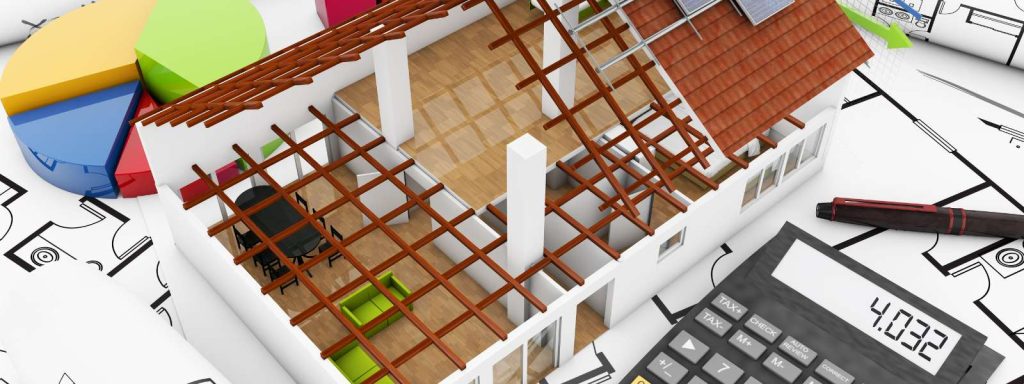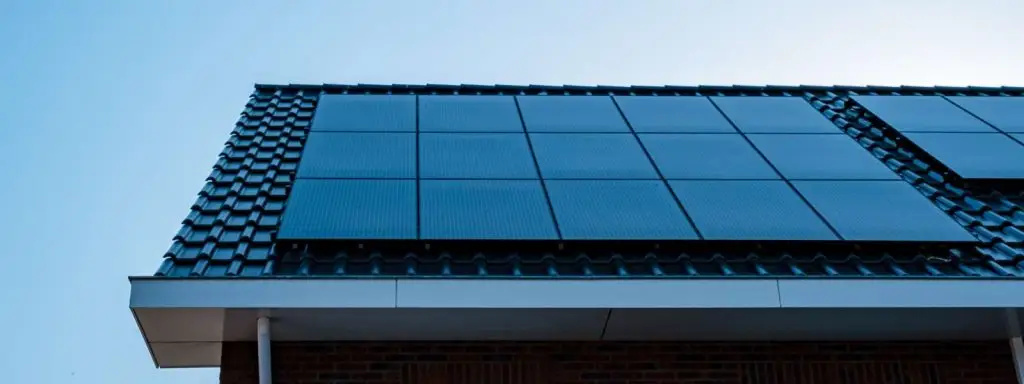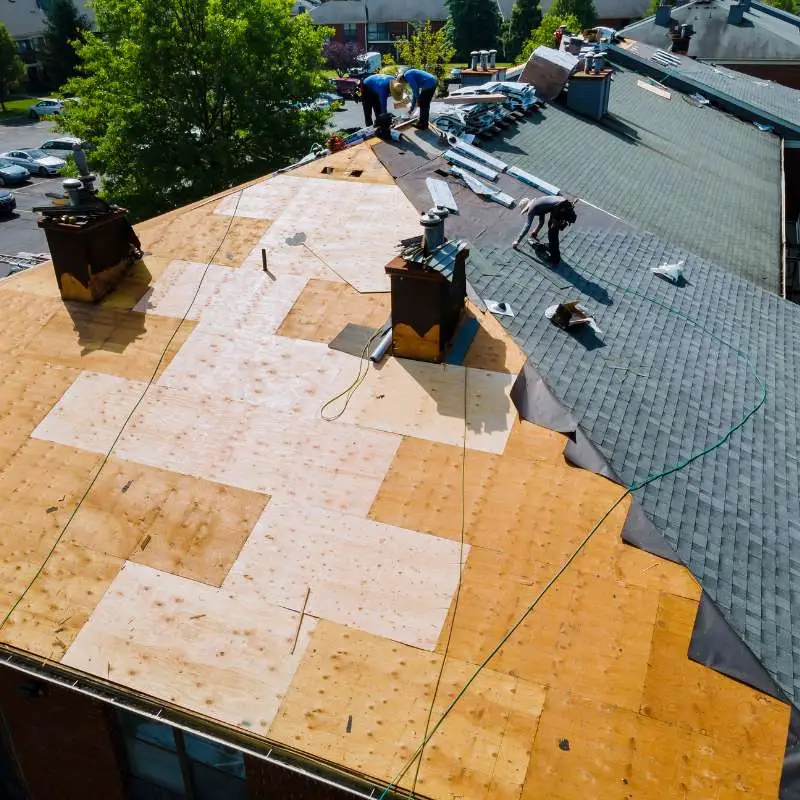Detailed Considerations for New Roof Installation
Increased Property Value
A new roof increases the curb appeal and, by extension, the value of your home. It is often a key selling point in real estate transactions as it reduces potential buyers’ concerns about upcoming major repairs. Homeowners can expect a significant return on investment, as a new roof can increase a home’s resale value by a percentage of the total roof replacement cost.
Enhanced Safety and Protection from Elements
Old, damaged roofs can pose serious risks. Leaks can lead to water damage, which compromises the structural integrity of your home and can cause health issues from mould and mildew. A new roof eliminates these hazards, providing peace of mind and enhanced protection against weather conditions, including heavy rain, snow, and wind.
Common Pitfalls and How to Avoid Them
Underestimating Costs
One common mistake homeowners make is underestimating the cost of a new roof. It’s crucial to get multiple quotes and ensure they include all potential expenses—from removal and disposal of the old roof to the final touches. This helps avoid unexpected costs that can cause budget overruns.
Choosing the Wrong Materials for the Climate
Selecting roofing materials that aren’t suited to the local climate can lead to premature wear and tear. For instance, metal roofing is excellent for snowy areas as it sheds snow easily, but may not be the best choice in coastal areas where salt spray can accelerate corrosion unless specifically treated for such conditions.
Hiring Inexperienced Contractors
Employing contractors who lack experience with your chosen roofing material can lead to poor installation, which compromises the roof’s integrity and longevity. Always check references and verify the contractor’s credentials and experience with the specific materials you are using.

The Importance of Professional Assessment
Role of Roof Inspectors and Assessors
Before undertaking a roof replacement, it’s advisable to have a professional roof inspection. Inspectors can assess the condition of your existing roof, identify any underlying issues, and advise on the necessity of a replacement. They can also help determine if any structural reinforcements are needed to support new materials.
Cost Savings Through Professional Advice
A professional assessment can lead to significant long-term savings. By identifying the best materials and ensuring that the roof is installed correctly, homeowners can avoid costly repairs and replacements down the line. Additionally, many assessors can help navigate local building codes and permit requirements, which streamlines the installation process.
Budgeting and Financing Options
Saving for a Roof Replacement
Setting aside funds for home improvements in a dedicated savings account can help manage the costs associated with a new roof. Consider planning for this expenditure as part of regular home maintenance, setting aside a small amount each month.
Financing Options
If immediate replacement is necessary, various financing options are available:
- Home Improvement Loans: These are unsecured loans that can be used for renovations, including roofing.
- Home Equity Loans: Using your home as collateral, these loans typically have lower interest rates and longer repayment terms.
- Government Grants: Some local governments offer grants or subsidies for home improvements that enhance energy efficiency or structural safety.
Detailed Considerations for New Roof Installation
Regional Considerations
The geographical location of your property can significantly influence both the material choices and installation practices. Different regions have different weather patterns, which dictate the best materials and construction methods for durability and efficiency. For instance, areas prone to hurricanes might benefit from hurricane straps and shingles that resist high winds, whereas snowy regions might require a steeper roof pitch to help shed snow.
Impact of Building Codes and Regulations
Local building codes can greatly affect the choices and costs associated with a new roof. These regulations are designed to ensure safety and environmental sustainability and may require specific materials or installation techniques. Homeowners must ensure their new roof complies with these codes, which may involve additional costs for materials like fire-resistant shingles in areas prone to wildfires.
The Role of Roofing Underlayment
The underlayment is a layer of material placed between the roof deck and the outer roofing material. It serves as an additional barrier against moisture and can significantly extend the life of the roof. There are several types of underlayment available, including felt and synthetic products, each with different benefits and costs. Discussing options with your contractor can ensure that you choose the best underlayment for your specific situation.
Sustainability and Eco-Friendly Options
In an era where sustainability is increasingly important, choosing eco-friendly roofing materials can be a significant consideration. Materials like recycled shingles, green roofs (covered with vegetation), and solar tiles not only reduce the environmental impact but can also provide added benefits like improved insulation and reduced energy costs. Although these options might have higher upfront costs, they often lead to long-term savings and can attract buyers if you plan to sell your home in the future.
Advanced Roofing Technologies and Innovations
Solar Roof Tiles
Solar roof tiles integrate photovoltaic cells directly into shingles, tiles, or other roofing materials, providing a seamless and aesthetically pleasing way to generate electricity. Although the initial investment is significant, the potential energy savings and tax incentives can make solar tiles a smart long-term investment.

Cool Roofing
Cool roofs are designed to reflect more sunlight and absorb less heat than standard roofs, significantly reducing cooling costs during hot months. This technology involves special reflective paints, tiles, or shingles. Especially useful in hot climates, cool roofing is an efficient way to increase a home’s energy efficiency and comfort.
Automated Roof Sensors
Emerging technologies include smart roofing systems equipped with sensors that monitor roof conditions, weather, and even energy usage. These systems can alert homeowners to potential issues before they become severe problems, such as leaks or structural weaknesses.
Long-Term Maintenance and Care
Regular Inspections
Routine inspections are crucial to extending the lifespan of your roof. Professional roofers can spot early signs of damage and address them promptly, preventing minor issues from escalating into major problems.
Maintenance Tips
Simple maintenance tasks can significantly impact the longevity and performance of your roof. Keeping gutters clean, removing debris, and trimming overhanging branches can help prevent damage. Additionally, after severe weather events, it’s wise to check for and repair any damage, such as missing shingles or dents in metal roofing.
Repair vs. Replacement
Understanding when to repair your roof and when to replace it can save you money and prevent damage to your home. Minor issues like a few missing shingles or a small leak can often be repaired. However, widespread damage, ongoing leaks, or a roof nearing the end of its expected lifespan are indicators that a replacement might be more cost-effective.
Navigating the Roof Replacement Process
Choosing the Right Contractor
Selecting the right roofing contractor is perhaps the most important decision in the roof replacement process. It’s essential to choose a licensed, insured, and experienced professional. Seek out reviews, ask for references, and obtain multiple quotes to ensure you’re getting the best service at a fair price.
Understanding Warranties
Roofing warranties can protect your investment but understanding the details is key. There are typically two types of warranties: manufacturer warranties, which cover defects in roofing materials, and workmanship warranties from the contractor, which cover installation errors. Ensure you understand what is covered under each and the duration of the coverage.
Financing and Insurance
Finally, navigating the financial aspects of roof replacement is vital. Many roofing companies offer financing plans, which can help make the process more affordable. Additionally, if your roof was damaged by weather or other covered events, your homeowner’s insurance might cover some or all of the replacement cost. Understanding your policy’s coverage, including any deductibles or exclusions, is crucial.
Key Factors Influencing the Price of a New Roof
Replacing your roof is a significant investment in your home’s value, safety, and efficiency. By understanding the factors that impact the cost and effectiveness of a new roof, homeowners can make informed decisions that ensure their home remains a comfortable and secure place to live. With careful planning, professional advice, and consideration of advanced materials and technologies, you can maximise the return on your investment and enjoy the benefits of a new roof for decades to come.




